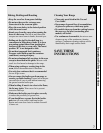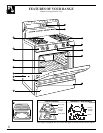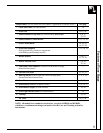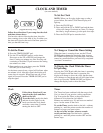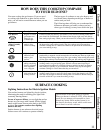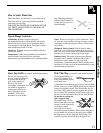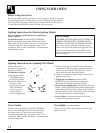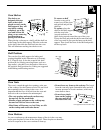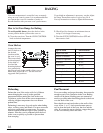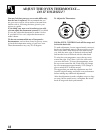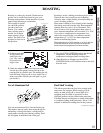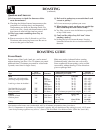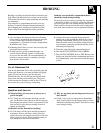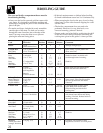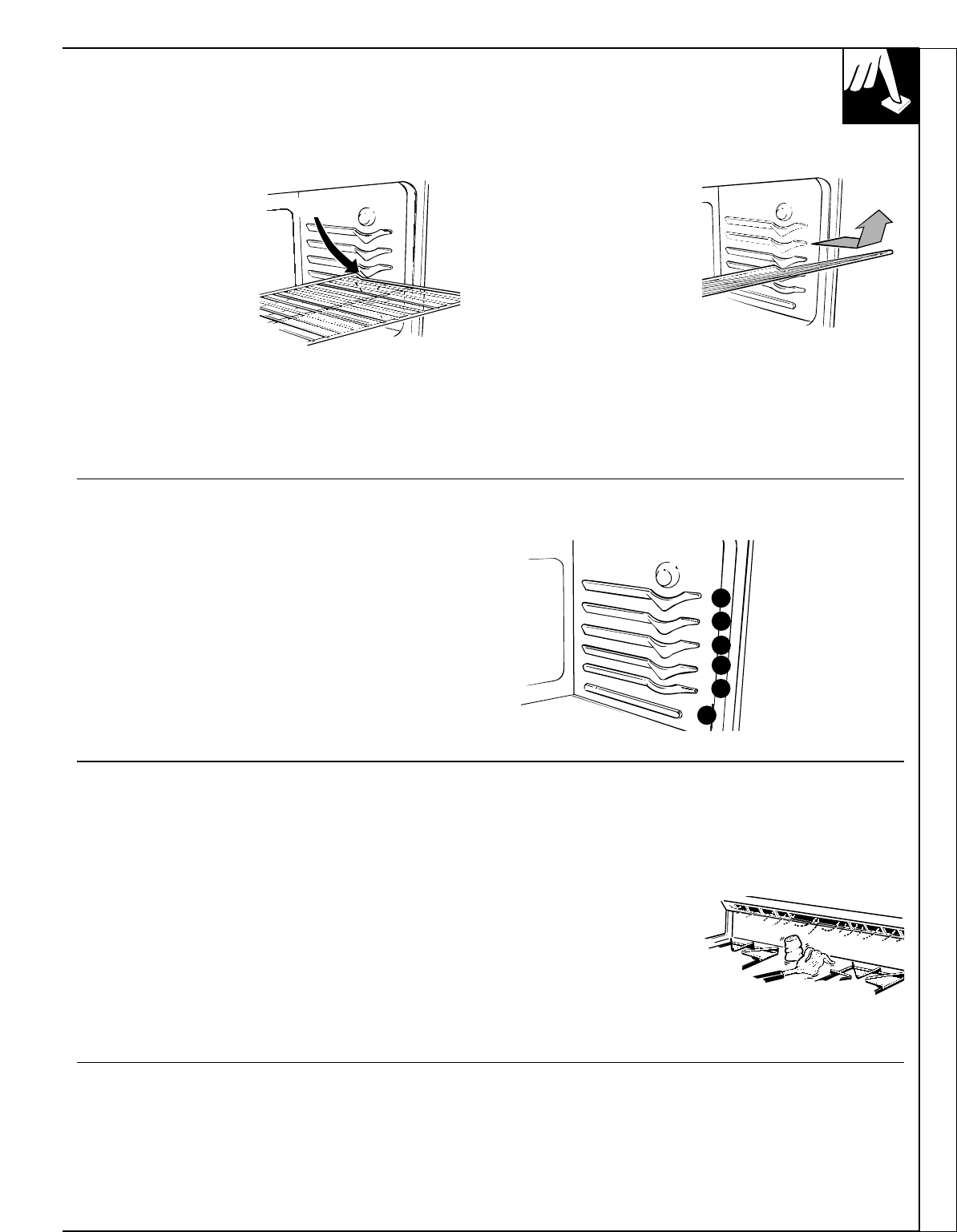
Using Your Oven
Oven Shelves
The shelves are
designed with stop-
locks so that when
placed correctly on the
shelf supports, they will
stop before coming
completely out of the
oven and will not tilt
when you are removing
food from them or
placing food on them.
When placing cookware on a shelf, pull the shelf out
to the bump on the shelf support. Place the cookware
on the shelf, then slide the shelf back into the oven.
This will eliminate reaching into the hot oven.
To remove a shelf
from the oven, pull it
toward you, tilt the front
end upward and pull the
shelf out.
To replace, place the
shelf on the shelf support
with the stop-locks
(curved extension of the
shelf) facing up and toward the rear of the oven.
Tilt up the front and push the shelf toward the back
of the oven until it goes past the bump on the shelf
support. Then lower the front of the shelf and push it
all the way back.
Oven Vents
The oven is vented through duct openings at the rear
of the cooktop. See the Features section. Do not block
these openings when cooking in the oven—it is
important that the flow of hot air from the oven and
fresh air to the oven burners be uninterrupted.
• The vent openings and nearby surfaces may
become hot. Do not touch them.
• Handles of pots and pans on the cooktop may
become hot if left too close to the vent.
• Metal items will become very hot if they are left
on the cooktop and could cause burns.
• Do not leave any items on the cooktop. The hot air
from the vent may ignite flammable items and will
increase pressure in closed containers, which may
cause them to burst.
• Do not leave plastic
items on the cooktop—
they may melt if left
too close to the vent.
Oven Moisture
As your oven heats up, the temperature change of the air in the oven may
cause water droplets to form on the door glass. These droplets are harmless
and will evaporate as the oven continues to heat up.
15
Shelf Positions
The oven has five shelf supports for baking and
roasting identified in this illustration as A (bottom),
B, C, D and E (top). It also has a special low shelf
position (R) for roasting extra large items, such as a
large turkey—the shelf is not designed to slide out at
this position. Shelf positions for cooking are suggested
in the Baking and Roasting sections.
D
E
C
B
A
R
Vent appearance and location vary.
Bump



